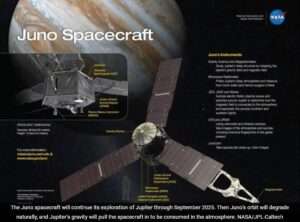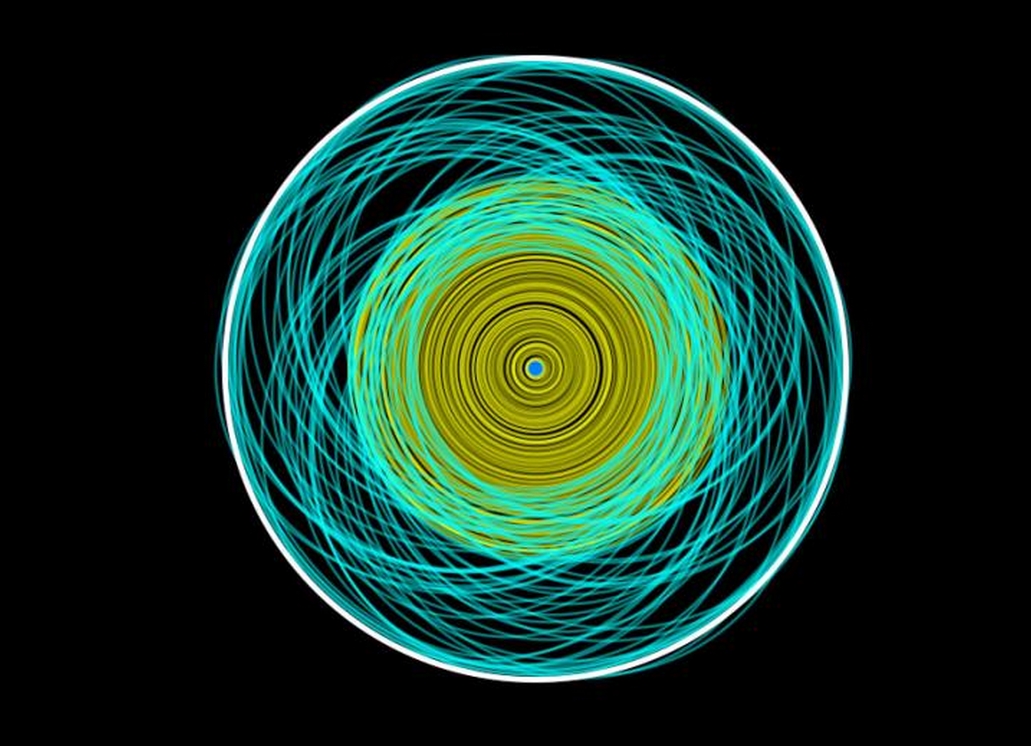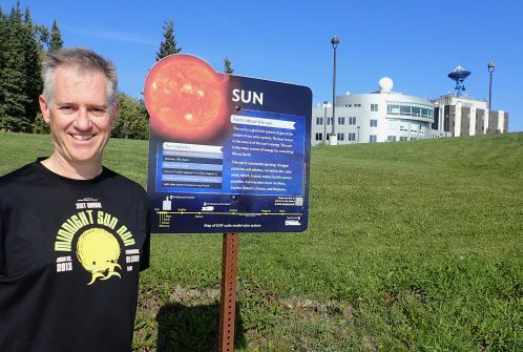 New discoveries about Jupiter could lead to a better understanding of Earth’s own space environment and influence a long-running scientific debate about the solar system’s largest planet.
New discoveries about Jupiter could lead to a better understanding of Earth’s own space environment and influence a long-running scientific debate about the solar system’s largest planet.
“By exploring a larger space such as Jupiter, we can better understand the fundamental physics governing Earth’s magnetosphere and thereby improve our space weather forecasting,” said Peter Delamere, a professor at the UAF Geophysical Institute and the UAF College of Natural Science and Mathematics.
“We are one big space weather event from losing communication satellites, our power grid assets, or both,” he said.
Space weather refers to disturbances in the Earth’s magnetosphere caused by interactions between the solar wind and the Earth’s magnetic field. These are generally associated with solar storms and the sun’s coronal mass ejections, which can lead to magnetic fluctuations and disruptions in power grids, pipelines and communication systems.
Delamere and a team of co-authors detailed their findings about Jupiter’s magnetosphere in a recent paper in AGU Advances. Geophysical Institute research associate professor Peter Damiano, UAF graduate student researchers Austin Smith and Chynna Spitler, and former student Blake Mino are among the co-authors.
Delamere’s research shows that our solar system’s largest planet has a magnetosphere consisting of largely closed magnetic field lines at its polar regions but including a crescent-shaped area of open field lines. The magnetosphere is the shield that some planets have that deflects much of the solar wind.
The debate over open versus closed at the poles has raged for more than 40 years.
An open magnetosphere refers to a planet having some open-ended magnetic field lines near its poles. These are previously closed lines that have been broken apart by the solar wind and left to extend into space without re-entering the planet.
This creates regions on Jupiter where the solar wind, which carries some of the sun’s magnetic field lines, directly interacts with the planet’s ionosphere and atmosphere.
Solar particles moving toward a planet on open field lines do not cause the aurora, which largely occurs on closed field lines. However, the energy and momentum of solar wind particles on open field lines does transfer to the closed system.
Earth has a largely open magnetosphere at its poles, with aurora occurring on closed field lines.. It is the transferred energy on those open lines that can disrupt power grids and communications.
In order to study Jupiter’s magnetosphere, Delamere ran a variety of models using data acquired by the NASA Juno spacecraft, which entered Jupiter’s orbit in 2016 and has an elliptical polar orbit.
“We never had data from the polar regions, so Juno has been transformative in terms of the planet’s auroral physics and helping further the discussion about its magnetic field lines,” Delamere said.
The debate began with the 1979 flybys of Jupiter by NASA’s Voyager 1 and Voyager 2. That data led many to believe that the planet had a generally open magnetosphere at its poles. Other scientists argued that Jupiter’s auroral activity, which is much different from Earth’s, indicated the planet had a mostly closed magnetosphere at the poles. Delamere, a longtime researcher of Jupiter’s magnetic field, published a paper supporting that view in 2010.
In 2021, he was a co-author on a paper by Binzheng Zhang of the University of Hong Kong that suggested through modeling that Jupiter’s magnetosphere had two regions of open magnetic field lines at its poles. The model shows one set of open-ended field lines emerging from the poles and trailing outward behind the planet in the magnetotail, the narrow teardrop-shaped portion of the magnetosphere pointing away from the sun. The other set emerges from Jupiter’s poles and goes off to the sides into space, carried by the solar wind.
“The Zhang result provided a plausible explanation for the open field line regions,” Delamere said. “And this year we provided the compelling evidence in the Juno data to support the model result.
“It is a major validation of the Zhang paper,” he said.
Delamere said it’s important to study Jupiter to better understand Earth.
“In the big picture, Jupiter and Earth represent opposite ends of the spectrum — open versus closed field lines,” he said. “To fully understand magnetospheric physics, we need to understand both limits.”
Delamere’s evidence came via an instrument on the Juno spacecraft that revealed a polar area where ions flowed in a direction opposite Jupiter’s rotation.
Subsequent modeling showed a similar ion flow in the same area — and near the open field lines proposed in the 2021 paper by Zhang and Delamere.
“The ionized gas on [closed] magnetic field lines connected to Jupiter’s northern and southern hemispheres rotates with the planet,” Delamere’s new paper concludes, “while ionized gas on [open] field lines that connect to the solar wind move with the solar wind.”
Delamere writes that the polar location of open magnetic field lines “may represent a characteristic feature of rotating giant magnetospheres for future exploration.”
Other contributors are from the University of Colorado Boulder, Johns Hopkins University, Andrews University, Embry-Riddle Aeronautical University, University of Hong Kong, University of Texas San Antonio, Southwest Research Institute and O.J. Brambles Consulting in the United Kingdom.
Delamere will present the research in July at the Conference on Magnetospheres of the Outer Planets at the University of Minnesota.
[content id=”79272″]






